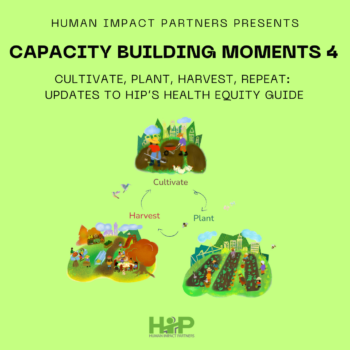| By Darío Maciel |
Today, HIP and Santa Ana Building Healthy Communities (SABHC) released a report on the health and equity impacts of a gang injunction in the Townsend-Raitt neighborhood of Santa Ana, California.
A gang injunction is a controversial policing practice that essentially acts as a group restraining order against alleged gang members within a safety zone, a specific geographic area thought to be “controlled” by a gang. Since the 1980’s, over 60 gang injunctions have been imposed in California in an attempt to curtail a historic spike in violent crime in the state (and in the nation) during the late 1980’s and early 1990’s, a topic we tackled in a previous blog post.
The injunction in Santa Ana, the city’s second, would prevent alleged gang members from associating with each other or carrying out certain illegal and legal activities within the safety zone. The injunction has stirred up heated debate in Santa Ana since June 2014, when it was first implemented, and has been a flashpoint for controversy more recently amidst allegations of police brutality. Supporters of the injunction say it will lead to decreased crime and violence for all residents, while opponents say the injunction fails to address the root causes of crime and may lead to increased police mistreatment of local youth.
The HIA, which worked locally with SABHC, Chican@s Unidos de Orange County, KidWorks, Santa Ana Boys & Men of Color, Latino Health Access, UC Irvine’s Community Knowledge and Community & Labor projects, and the Urban Peace Institute, examined the impact the gang injunction would have on crime, safety, community-police relationships, education and employment, and collected data on community safety through surveys, interviews and focus groups. The HIA focused on populations that may be disproportionately affected by the gang injunction, including youth, undocumented immigrants, transgender or queer-identified people, the homeless, and those with physical and mental disabilities. Members of these groups fear that increased police presence in the neighborhood will exacerbate the potential for profiling and discrimination.
The HIA concluded that the injunction is unlikely to bring about significant and lasting reduction of serious crime, based on the outcomes of other gang injunctions and input gathered from residents, city officials, community organizations and police. On the contrary, the injunction could have negative effects on public safety, public health and public trust.
The HIA found that:
- The evidence is insufficient that a gang injunction will reduce violent crime, gang activity or gang membership, or that it will improve community-police relationships.
- An injunction could make some in the community, particularly parents, feel more safe, but members of marginalized groups may, in contrast, feel more threatened by increased police presence.
- An injunction could lead to significant disruptions to education and employment opportunities for those named in the gang injunction, with immediate harm to their health and well-being and long-term harm to their chances in life.
- Young black and Latino men who experience repeated, unsubstantiated searches and other forms of suppression-based policing may experience higher levels of anxiety and depression than their peers.
- An injunction could divert funding from community programs that address the economic and social problems that are the root causes of much crime and a detriment to public health and well-being. In contrast to the mixed evidence on the effects of policing strategies on crime, there is solid evidence that correlates reductions in crime with environmental, educational and economic factors.
Our findings led us to make specific recommendations for the police and other law enforcement and criminal justice agencies, city officials and community organizations. Our partners plan to use the data from the HIA in their campaigns on healthy policing practices and in upcoming court proceedings to determine whether the gang injunction will be upheld or reversed.
This report marks HIP’s third HIA on criminal justice policies, with a fourth HIA on policing in Ohio in the works (stay tuned!).
The efforts of groups such as those in Santa Ana to evaluate the public health impacts of policing practices, especially on communities of color, help to move us forward into rethinking how to best promote community safety for all.




